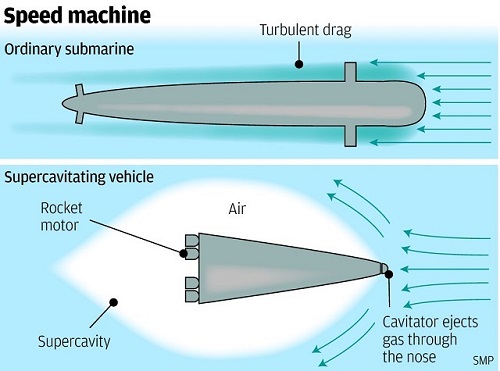- Joined
- Aug 28, 2011
- Messages
- 3,990
- Points
- 63
https://mil.news.sina.com.cn/jssd/2019-07-10/doc-ihytcitm0912066.shtml
中国公开疑似新型“无头”潜艇 外媒:它只用锂电池
中国公开疑似新型“无头”潜艇 外媒:它只用锂电池
756
 江南造船集团公开画面
江南造船集团公开画面
去年10月,中国江南造船集团公开了一段宣传员工先进事迹的视频,其中曝光了一艘从未见过的新型潜艇。从外观上看,这艘潜艇为水滴型设计,外观十分精炼。然而从公开的画面看,这艘潜艇竟然是“无头”的!这指的是,这艘潜艇没有高大的潜艇指挥塔,或被称为“围壳”的潜艇舰桥,在指挥塔的位置只有一个很小的弧形凸起。
有俄罗斯的武器绘画家,将中国这艘新型潜艇画了出来。这艘“无头”潜艇独树一帜的外观,很快就在国外军事分析家中引发了种种猜测。分析者们提出了不少看法,但随后发现带来的是更多谜团。
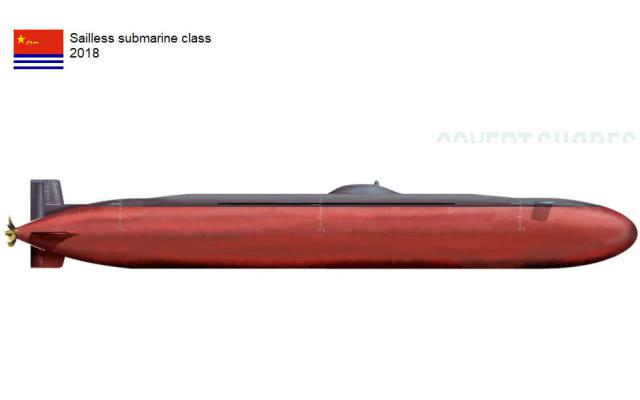 俄罗斯武器画家绘制的潜艇侧面图
俄罗斯武器画家绘制的潜艇侧面图
第一,“无头”设计有什么优点?
几十年来,为了提高潜艇水下速度,潜艇指挥塔的外形也在不断改进。潜艇指挥塔越来越圆滑,以降低水中的阻力,例如德国212A、216型常规潜艇和俄罗斯“阿尔法”级、“阿库拉”级核潜艇。但是直接取消指挥塔,更像是一劳永逸的做法。
“无头”潜艇在历史上也曾出现过,例如前苏联的673型试验核潜艇。该潜艇在1960年代提出方案,由于太过超前,只停留在图纸上。按照设计,673型核潜艇采用全钛合金的艇身,155兆瓦的液态金属冷却反应堆,输出功率达4万马力。673型核潜艇的水下排水量估计2200吨,全长66米,最大水下速度高达40节,巡航速度也达到25节,最大实用深度为600米,极限深度可达1300米。核潜艇的艇员只需要35人,配备6座533毫米鱼雷发射管。
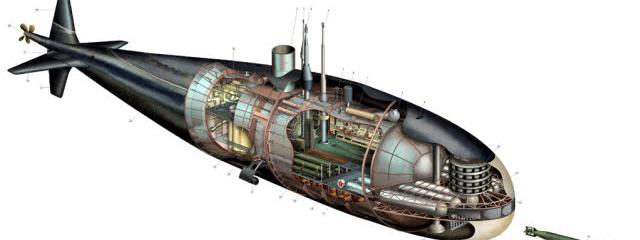 673型核潜艇
673型核潜艇
673型潜艇完全取消了指挥塔,潜望镜、通气管等装备则直接从艇身里伸出。全部伸缩设备收回后,整个潜艇酷似一个完全的水滴。这种高速核潜艇,被前苏联视为一种“水下截击机”,以突击敌方的战略核潜艇。
由于设计太过先进,673型的很多技术以当时的储备无法实现,所以该潜艇只留下了设计图纸。不过,673型核潜艇的部分技术,应用在了著名的705型“阿尔法”级攻击核潜艇上。而后者,至今仍保持着核潜艇水下航速的最高纪录(39节)。
第二,这艘潜艇是“无人”的?
在中国“无头”潜艇首次公开后,外国有的专业杂志认为这是一款“无人潜艇”,主要用于特种作战或科学试验。
但是随后对照片的分析,又有人反驳了这一点。因为作为无人潜艇,这种尺寸的艇身体积过大。至今还没有哪个国家,使用过这么大的无人潜艇,而且也没有什么任务一定要进行遥控操纵。
最重要的是,最新的潜艇水上照片,能明显看到上面站着艇员。
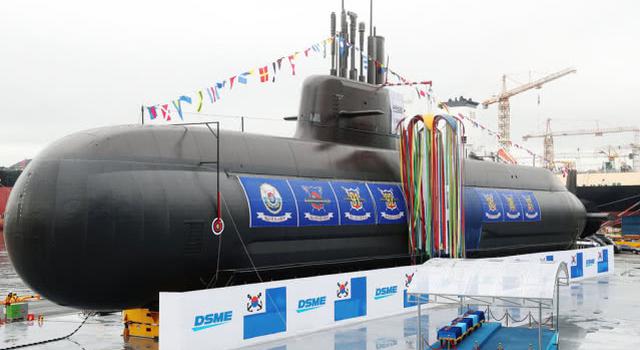 216型常规潜艇
216型常规潜艇
第三,为什么看不到鱼雷发射管?
最受到分析者关注的,是这艘潜艇从外观上看不到鱼雷发射管的痕迹,甚至看不到声呐。因此,这艘潜艇的用途也难以捉摸。
江南造船集团的公开视频非常清晰,可以看清楚新型潜艇的整个艇身,但是艇身头部严丝合缝,看不到传统的圆型发射口。而类似的新型潜艇下水前,都可以清晰识别出鱼雷发射口。
因此只有两种可能,一种是中国的潜艇发射管建造技术高超,可以做到外表完全没有痕迹;另一种解释就是,这种新型潜艇是试验型号,仅用于某些水下的试验,比如测试高速性。
 945型“阿库拉”级核潜艇
945型“阿库拉”级核潜艇
第四,这是一艘不到1000吨的小型潜艇吗?
从外观看,江南造船集团公开的这艘潜艇长度并不大。外国分析潜艇长度大约不到50米,因此排水量可能只有1000吨左右甚至不到1000吨。这个吨位只能算是小型潜艇。
比照现代潜艇的尺寸,正常的常规潜艇都在2000吨以上,最大的能在5000吨以上。1000吨级的小型潜艇,不适合远海作战,而且武器配备也受到限制。主要军事强国,均没有开发这个级别的作战潜艇。
可见,这款潜艇主要目的并非作战,而是一种进行技术验证的平台。
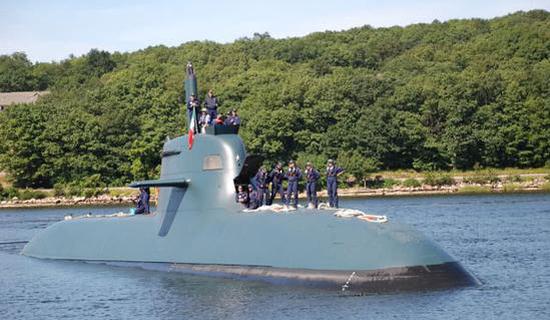 212A型常规潜艇
212A型常规潜艇
第五,这是一艘全电潜艇?
从尺寸和外观看,多数外国分析者认为这款“无头”潜艇并非核潜艇,应该是常规动力。中国目前已经掌握了AIP技术,因此这款潜艇很可能装备了这种无需空气的水下动力装置。
但是,也有分析者得出了更惊人的结论——这是一款“全电潜艇”,没有装备柴油机,完全靠锂电池提供动力!
分析者认为,这款潜艇看不到通气管的痕迹,而通气管是柴电潜艇必备的装备。另外,中国是世界最大的锂生产国,同时也是锂电池技术最先进的国家之一,在电动汽车等技术上领先全球。因此,中国像电动汽车那样开发一款“全电潜艇”,也不是不可能的事情。
如果中国真的能够突破“全电潜艇”的技术,那就像电动汽车一样,将再一次彻底改变潜艇的发展方向。(作者署名:陶慕剑)
China publicly suspected new "headless" submarine foreign media: it only uses lithium batteries
China publicly suspected new "headless" submarine foreign media: it only uses lithium batteries
756
Jiangnan Shipbuilding Group public screen Jiangnan Shipbuilding Group public screen
In October last year, China Jiangnan Shipbuilding Group unveiled a video promoting the advanced deeds of its employees, which revealed a new type of submarine that has never been seen before. From the appearance, this submarine is designed with a drop-shaped design and its appearance is very refined. However, from the public picture, this submarine turned out to be "headless"! This means that the submarine does not have a tall submarine command tower, or a submarine bridge called a "crust", with only a small curved bulge at the position of the control tower.
There is a Russian weapon painter who painted the new Chinese submarine. The unique appearance of this "headless" submarine quickly sparked speculation among foreign military analysts. The analysts made a lot of comments, but then discovered that there are more mysteries.
Russian weapon painter drawing submarine side view Russian weapon painter drawing submarine side view
First, what are the advantages of a "headless" design?
In the past few decades, in order to improve the submarine's underwater speed, the shape of the submarine command tower has also been continuously improved. The submarine command tower is becoming more and more sleek to reduce the resistance in the water, such as the German 212A, 216 conventional submarines and the Russian "Alpha" and "Akura" class nuclear submarines. But the direct cancellation of the command tower is more like a once-and-for-all approach.
"Headless" submarines have also appeared in history, such as the Soviet Union's Type 673 test nuclear submarine. The submarine proposed a plan in the 1960s, and because it was too advanced, it only stayed on the drawings. According to the design, the Type 673 nuclear submarine uses a full titanium alloy hull and a 155 MW liquid metal cooled reactor with an output of 40,000 horsepower. The underwater displacement of the Type 673 nuclear submarine is estimated to be 2,200 tons, with a total length of 66 meters. The maximum underwater speed is 40 knots, the cruising speed is also 25 knots, the maximum practical depth is 600 meters, and the ultimate depth is 1300 meters. The crew of the nuclear submarine only needs 35 people and is equipped with 6 533mm torpedo tubes.
Type 673 nuclear submarine 673 nuclear submarine
The 673 submarine completely canceled the control tower, and the periscope, snorkel and other equipment directly protruded from the hull. After all the telescopic equipment is retracted, the entire submarine looks like a complete drop of water. This high-speed nuclear submarine was regarded by the former Soviet Union as an "underwater interceptor" to assault enemy strategic submarines.
Because the design was too advanced, many of the 673's technology could not be realized with the reserves at the time, so the submarine only left the design drawings. However, part of the 673 nuclear submarine technology is applied to the famous 705 "Alpha"-class attack nuclear submarine. The latter still maintains the highest record of underwater submarine speed (39 knots).
Second, is this submarine "nobody"?
After the Chinese “headless” submarine was first publicized, foreign professional magazines considered it an “unmanned submarine”, mainly used for special operations or scientific experiments.
But then the analysis of the photos, some people refuted this. Because it is an unmanned submarine, the size of the hull is too large. No country has ever used such a large unmanned submarine, and there is no task that must be remotely controlled.
Most importantly, the latest photo of the submarine water can clearly see the crew standing above.
216 type conventional submarine 216 type conventional submarine
Third, why can't I see the torpedo tube?
The most concerned by the analyst is that the submarine does not see traces of the torpedo tube from the appearance, and even does not see the hoarse. Therefore, the use of this submarine is also elusive.
The public video of the Jiangnan Shipbuilding Group is very clear, and the entire hull of the new submarine can be seen clearly, but the head of the hull is tightly stitched and the traditional round-shaped launching port is not visible. The similar new submarine can clearly identify the torpedo launch before it is launched.
Therefore, there are only two possibilities. One is that the submarine launch tube construction technology in China is superb and can be completely traced. The other explanation is that the new submarine is a test model and is only used for some underwater tests. For example, testing high speed.
Type 945 "Akula" class nuclear submarine 945 "Akura" class nuclear submarine
Fourth, is this a small submarine of less than 1,000 tons?
Viewed from the outside, the length of the submarine disclosed by Jiangnan Shipbuilding Group is not large. The length of the foreign analysis submarine is less than 50 meters, so the displacement may be only about 1,000 tons or even less than 1,000 tons. This tonnage can only be regarded as a small submarine.
Compared with the size of modern submarines, the normal conventional submarines are more than 2,000 tons, and the largest can be more than 5,000 tons. Small submarines of 1,000 tons are not suitable for offshore operations, and weapons are also limited. None of the major military powers have developed this level of combat submarines.
It can be seen that the main purpose of this submarine is not combat, but a platform for technical verification.
Type 212A conventional submarine 212A conventional submarine
Fifth, is this an all-electric submarine?
From the size and appearance, most foreign analysts believe that this "headless" submarine is not a nuclear submarine, it should be conventional power. China has mastered AIP technology, so this submarine is likely to be equipped with this underwater-free power unit.
However, some analysts have come to even more striking conclusions - this is an "all-electric submarine", not equipped with a diesel engine, powered entirely by a lithium battery!
Analysts believe that this submarine does not see traces of the snorkel, and the snorkel is a must-have for diesel-electric submarines. In addition, China is the world's largest lithium producer and one of the most advanced countries in lithium battery technology, leading the world in electric vehicles and other technologies. Therefore, it is not impossible for China to develop an "all-electric submarine" like an electric car.
If China can really break through the technology of "all-electric submarine", it will be like the electric car, and will once again completely change the development direction of the submarine. (Author's signature: Tao Mujian)
中国公开疑似新型“无头”潜艇 外媒:它只用锂电池
中国公开疑似新型“无头”潜艇 外媒:它只用锂电池
756

去年10月,中国江南造船集团公开了一段宣传员工先进事迹的视频,其中曝光了一艘从未见过的新型潜艇。从外观上看,这艘潜艇为水滴型设计,外观十分精炼。然而从公开的画面看,这艘潜艇竟然是“无头”的!这指的是,这艘潜艇没有高大的潜艇指挥塔,或被称为“围壳”的潜艇舰桥,在指挥塔的位置只有一个很小的弧形凸起。
有俄罗斯的武器绘画家,将中国这艘新型潜艇画了出来。这艘“无头”潜艇独树一帜的外观,很快就在国外军事分析家中引发了种种猜测。分析者们提出了不少看法,但随后发现带来的是更多谜团。

第一,“无头”设计有什么优点?
几十年来,为了提高潜艇水下速度,潜艇指挥塔的外形也在不断改进。潜艇指挥塔越来越圆滑,以降低水中的阻力,例如德国212A、216型常规潜艇和俄罗斯“阿尔法”级、“阿库拉”级核潜艇。但是直接取消指挥塔,更像是一劳永逸的做法。
“无头”潜艇在历史上也曾出现过,例如前苏联的673型试验核潜艇。该潜艇在1960年代提出方案,由于太过超前,只停留在图纸上。按照设计,673型核潜艇采用全钛合金的艇身,155兆瓦的液态金属冷却反应堆,输出功率达4万马力。673型核潜艇的水下排水量估计2200吨,全长66米,最大水下速度高达40节,巡航速度也达到25节,最大实用深度为600米,极限深度可达1300米。核潜艇的艇员只需要35人,配备6座533毫米鱼雷发射管。

673型潜艇完全取消了指挥塔,潜望镜、通气管等装备则直接从艇身里伸出。全部伸缩设备收回后,整个潜艇酷似一个完全的水滴。这种高速核潜艇,被前苏联视为一种“水下截击机”,以突击敌方的战略核潜艇。
由于设计太过先进,673型的很多技术以当时的储备无法实现,所以该潜艇只留下了设计图纸。不过,673型核潜艇的部分技术,应用在了著名的705型“阿尔法”级攻击核潜艇上。而后者,至今仍保持着核潜艇水下航速的最高纪录(39节)。
第二,这艘潜艇是“无人”的?
在中国“无头”潜艇首次公开后,外国有的专业杂志认为这是一款“无人潜艇”,主要用于特种作战或科学试验。
但是随后对照片的分析,又有人反驳了这一点。因为作为无人潜艇,这种尺寸的艇身体积过大。至今还没有哪个国家,使用过这么大的无人潜艇,而且也没有什么任务一定要进行遥控操纵。
最重要的是,最新的潜艇水上照片,能明显看到上面站着艇员。

第三,为什么看不到鱼雷发射管?
最受到分析者关注的,是这艘潜艇从外观上看不到鱼雷发射管的痕迹,甚至看不到声呐。因此,这艘潜艇的用途也难以捉摸。
江南造船集团的公开视频非常清晰,可以看清楚新型潜艇的整个艇身,但是艇身头部严丝合缝,看不到传统的圆型发射口。而类似的新型潜艇下水前,都可以清晰识别出鱼雷发射口。
因此只有两种可能,一种是中国的潜艇发射管建造技术高超,可以做到外表完全没有痕迹;另一种解释就是,这种新型潜艇是试验型号,仅用于某些水下的试验,比如测试高速性。

第四,这是一艘不到1000吨的小型潜艇吗?
从外观看,江南造船集团公开的这艘潜艇长度并不大。外国分析潜艇长度大约不到50米,因此排水量可能只有1000吨左右甚至不到1000吨。这个吨位只能算是小型潜艇。
比照现代潜艇的尺寸,正常的常规潜艇都在2000吨以上,最大的能在5000吨以上。1000吨级的小型潜艇,不适合远海作战,而且武器配备也受到限制。主要军事强国,均没有开发这个级别的作战潜艇。
可见,这款潜艇主要目的并非作战,而是一种进行技术验证的平台。

第五,这是一艘全电潜艇?
从尺寸和外观看,多数外国分析者认为这款“无头”潜艇并非核潜艇,应该是常规动力。中国目前已经掌握了AIP技术,因此这款潜艇很可能装备了这种无需空气的水下动力装置。
但是,也有分析者得出了更惊人的结论——这是一款“全电潜艇”,没有装备柴油机,完全靠锂电池提供动力!
分析者认为,这款潜艇看不到通气管的痕迹,而通气管是柴电潜艇必备的装备。另外,中国是世界最大的锂生产国,同时也是锂电池技术最先进的国家之一,在电动汽车等技术上领先全球。因此,中国像电动汽车那样开发一款“全电潜艇”,也不是不可能的事情。
如果中国真的能够突破“全电潜艇”的技术,那就像电动汽车一样,将再一次彻底改变潜艇的发展方向。(作者署名:陶慕剑)
China publicly suspected new "headless" submarine foreign media: it only uses lithium batteries
China publicly suspected new "headless" submarine foreign media: it only uses lithium batteries
756
Jiangnan Shipbuilding Group public screen Jiangnan Shipbuilding Group public screen
In October last year, China Jiangnan Shipbuilding Group unveiled a video promoting the advanced deeds of its employees, which revealed a new type of submarine that has never been seen before. From the appearance, this submarine is designed with a drop-shaped design and its appearance is very refined. However, from the public picture, this submarine turned out to be "headless"! This means that the submarine does not have a tall submarine command tower, or a submarine bridge called a "crust", with only a small curved bulge at the position of the control tower.
There is a Russian weapon painter who painted the new Chinese submarine. The unique appearance of this "headless" submarine quickly sparked speculation among foreign military analysts. The analysts made a lot of comments, but then discovered that there are more mysteries.
Russian weapon painter drawing submarine side view Russian weapon painter drawing submarine side view
First, what are the advantages of a "headless" design?
In the past few decades, in order to improve the submarine's underwater speed, the shape of the submarine command tower has also been continuously improved. The submarine command tower is becoming more and more sleek to reduce the resistance in the water, such as the German 212A, 216 conventional submarines and the Russian "Alpha" and "Akura" class nuclear submarines. But the direct cancellation of the command tower is more like a once-and-for-all approach.
"Headless" submarines have also appeared in history, such as the Soviet Union's Type 673 test nuclear submarine. The submarine proposed a plan in the 1960s, and because it was too advanced, it only stayed on the drawings. According to the design, the Type 673 nuclear submarine uses a full titanium alloy hull and a 155 MW liquid metal cooled reactor with an output of 40,000 horsepower. The underwater displacement of the Type 673 nuclear submarine is estimated to be 2,200 tons, with a total length of 66 meters. The maximum underwater speed is 40 knots, the cruising speed is also 25 knots, the maximum practical depth is 600 meters, and the ultimate depth is 1300 meters. The crew of the nuclear submarine only needs 35 people and is equipped with 6 533mm torpedo tubes.
Type 673 nuclear submarine 673 nuclear submarine
The 673 submarine completely canceled the control tower, and the periscope, snorkel and other equipment directly protruded from the hull. After all the telescopic equipment is retracted, the entire submarine looks like a complete drop of water. This high-speed nuclear submarine was regarded by the former Soviet Union as an "underwater interceptor" to assault enemy strategic submarines.
Because the design was too advanced, many of the 673's technology could not be realized with the reserves at the time, so the submarine only left the design drawings. However, part of the 673 nuclear submarine technology is applied to the famous 705 "Alpha"-class attack nuclear submarine. The latter still maintains the highest record of underwater submarine speed (39 knots).
Second, is this submarine "nobody"?
After the Chinese “headless” submarine was first publicized, foreign professional magazines considered it an “unmanned submarine”, mainly used for special operations or scientific experiments.
But then the analysis of the photos, some people refuted this. Because it is an unmanned submarine, the size of the hull is too large. No country has ever used such a large unmanned submarine, and there is no task that must be remotely controlled.
Most importantly, the latest photo of the submarine water can clearly see the crew standing above.
216 type conventional submarine 216 type conventional submarine
Third, why can't I see the torpedo tube?
The most concerned by the analyst is that the submarine does not see traces of the torpedo tube from the appearance, and even does not see the hoarse. Therefore, the use of this submarine is also elusive.
The public video of the Jiangnan Shipbuilding Group is very clear, and the entire hull of the new submarine can be seen clearly, but the head of the hull is tightly stitched and the traditional round-shaped launching port is not visible. The similar new submarine can clearly identify the torpedo launch before it is launched.
Therefore, there are only two possibilities. One is that the submarine launch tube construction technology in China is superb and can be completely traced. The other explanation is that the new submarine is a test model and is only used for some underwater tests. For example, testing high speed.
Type 945 "Akula" class nuclear submarine 945 "Akura" class nuclear submarine
Fourth, is this a small submarine of less than 1,000 tons?
Viewed from the outside, the length of the submarine disclosed by Jiangnan Shipbuilding Group is not large. The length of the foreign analysis submarine is less than 50 meters, so the displacement may be only about 1,000 tons or even less than 1,000 tons. This tonnage can only be regarded as a small submarine.
Compared with the size of modern submarines, the normal conventional submarines are more than 2,000 tons, and the largest can be more than 5,000 tons. Small submarines of 1,000 tons are not suitable for offshore operations, and weapons are also limited. None of the major military powers have developed this level of combat submarines.
It can be seen that the main purpose of this submarine is not combat, but a platform for technical verification.
Type 212A conventional submarine 212A conventional submarine
Fifth, is this an all-electric submarine?
From the size and appearance, most foreign analysts believe that this "headless" submarine is not a nuclear submarine, it should be conventional power. China has mastered AIP technology, so this submarine is likely to be equipped with this underwater-free power unit.
However, some analysts have come to even more striking conclusions - this is an "all-electric submarine", not equipped with a diesel engine, powered entirely by a lithium battery!
Analysts believe that this submarine does not see traces of the snorkel, and the snorkel is a must-have for diesel-electric submarines. In addition, China is the world's largest lithium producer and one of the most advanced countries in lithium battery technology, leading the world in electric vehicles and other technologies. Therefore, it is not impossible for China to develop an "all-electric submarine" like an electric car.
If China can really break through the technology of "all-electric submarine", it will be like the electric car, and will once again completely change the development direction of the submarine. (Author's signature: Tao Mujian)


